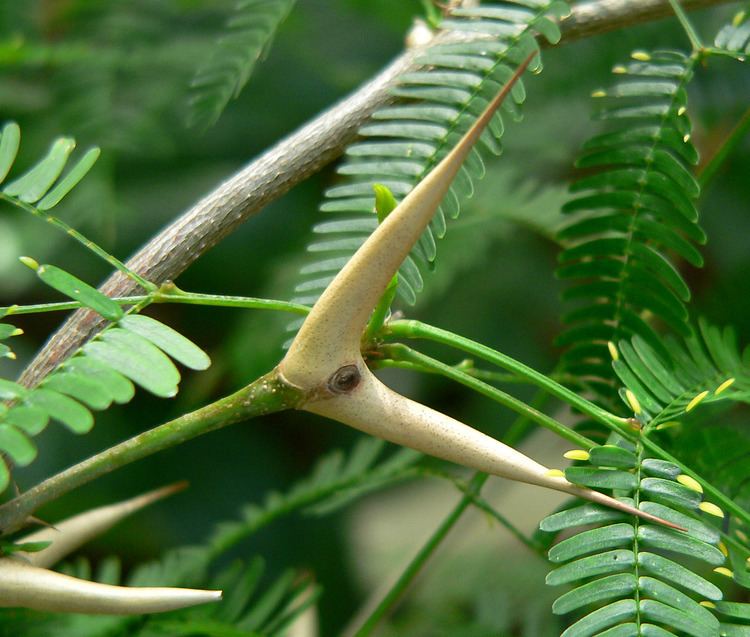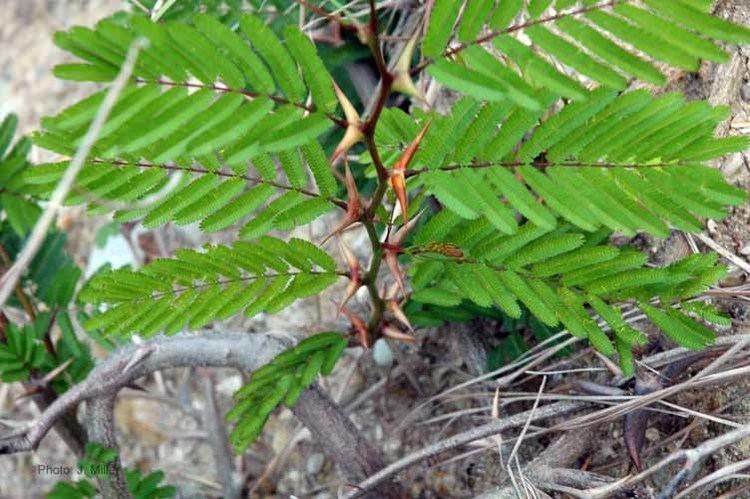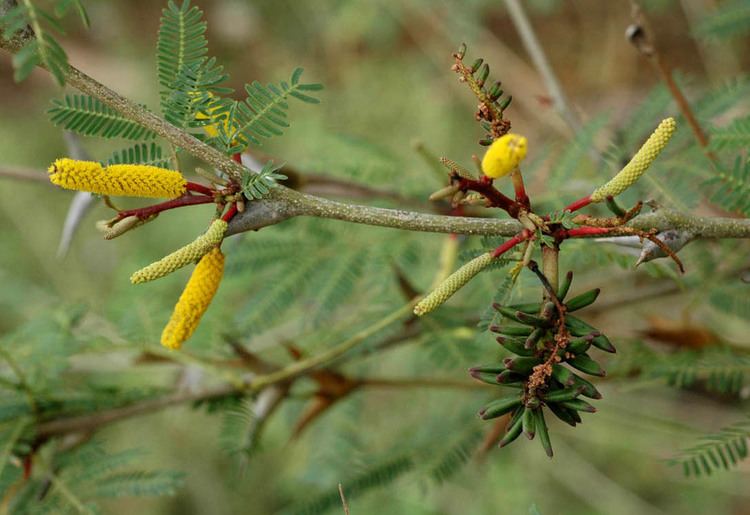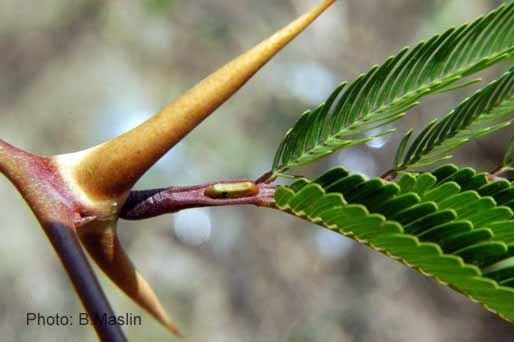Rank Species | Genus Vachellia Higher classification Thorn trees | |
 | ||
Similar Thorn trees, Pseudomyrmex ferruginea, Pseudomyrmex, Vachellia collinsii, Legumes | ||
Vachellia cornigera, commonly known as Bullhorn Acacia (family Fabaceae), is a swollen-thorn tree native to Mexico and Central America. The common name of "bullhorn" refers to the enlarged, hollowed-out, swollen thorns (technically called stipular spines) that occur in pairs at the base of leaves, and resemble the horns of a steer. In Yucatán (one region where the bullhorn acacia thrives) it is called "subín", in Panamá the locals call them "cachito" (little horn). The tree grows to a height of 10 metres (33 ft). The Vachellia cornigera is typically found in woodland and great plains.
Contents

Mutualistic Symbiosis

Bullhorn Acacia is best known for its symbiotic relationship with a species of Pseudomyrmex ant (Pseudomyrmex ferruginea) that lives in its hollowed-out thorns. Unlike other acacias, Bullhorn acacias are deficient in the bitter alkaloids usually located in the leaves that defend against ravaging insects and animals. Bullhorn acacia ants fulfil that role.

The ants act as a defense mechanism for the tree, protecting it against harmful insects, animals or humans that may come into contact with it. The ants live in the hollowed-out thorns for which the tree is named. In return, the tree supplies the ants with protein-lipid nodules called Beltian bodies from its leaflet tips and carbohydrate-rich nectar from glands on its leaf stalk. These Beltian bodies have no known function other than to provide food for the symbiotic ants. The aggressive ants release an alarm pheromone and rush out of their thorn "barracks" in great numbers.

According to Daniel Janzen, livestock can apparently smell the pheromone and avoid these acacias day and night. Getting stung in the mouth and tongue is an effective deterrent to browsing on the tender foliage. In addition to protecting V. conigera from leaf-cutting ants and other unwanted herbivores, the ants also clear away invasive seedlings around the base of the tree that might overgrow it and block out vital sunlight.
Decorative uses
The thorns of V. cornigera, are often strung into unusual necklaces and belts. In El Salvador the horn-shaped thorns provide the legs for small ballerina seed dolls which are worn as decorative pins.
Traditional medicine
The thorns of V. cornigera are also used in traditional Maya acupuncture.
